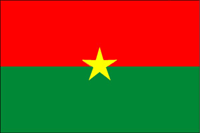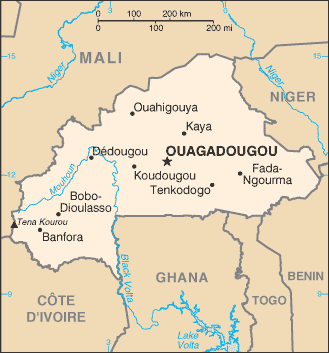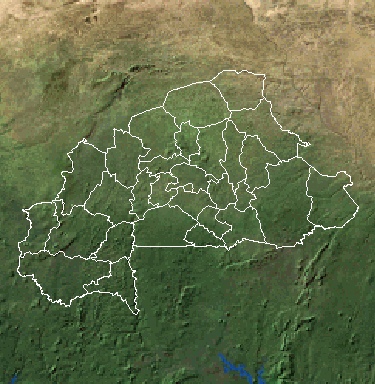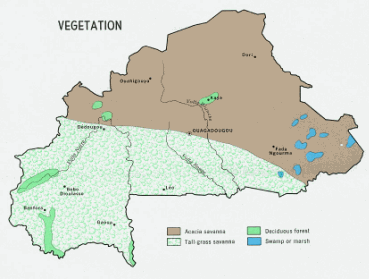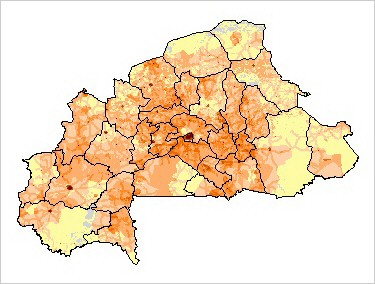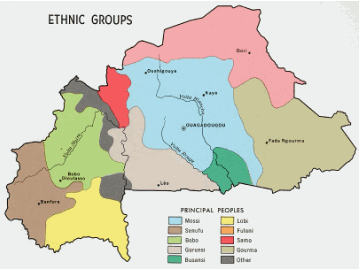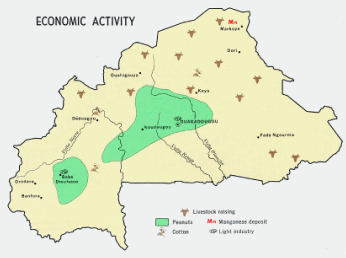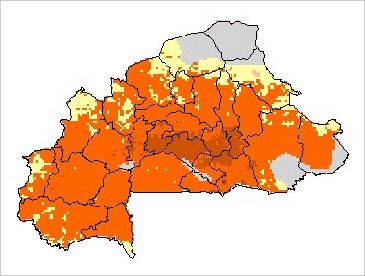|
|
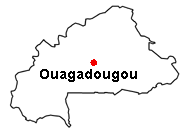 |
| back to top | |||
|
Population. Extremely low. Estimated at 100. Perhaps only found, now, in the complex of national parks and protected areas and the tri-country national park W in the eastern point of the country that borders Niger and Benin. A few cheetahs exist in the Singou Fauna Reserve and the adjacent proposed Arlin National Park. Cheetahs may now be extinct in the vicinity of Kabore Tambi National Park and the Natinga Game Ranch in southern Burkina Faso. The cheetah is totally protected but enforcement is likely to be inadequate. Principal Threats. The country is under growing invasion by large numbers of nomads from the north, which has increased the pressure on the cheetah's range. Loss of habitat, poaching and insufficient numbers of cheetah to sustain a viable population. |
|||
|
|
|||
|
|||
|
|
|||
| Background: Burkina Faso (formerly Upper Volta) achieved independence from France in 1960. Repeated military coups during the 1970s and 1980s were followed by multiparty elections in the early 1990s. Current President Blaise COMPAORE came to power in a 1987 military coup and has won every election since then. Burkina Faso's high population density and limited natural resources result in poor economic prospects for the majority of its citizens. Recent unrest in Cote d'Ivoire and northern Ghana has hindered the ability of several hundred thousand seasonal Burkinabe farm workers to find employment in neighboring countries. | |||
| |
back to top |
|
Area: total: 274,200 sq km; land: 273,800 sq km; water: 400 sq km Climate: tropical; warm, dry winters; hot, wet summers Terrain: mostly flat to dissected, undulating plains; hills in west and southeast Natural resources: manganese, limestone, marble; small deposits of gold, phosphates, pumice, salt Land use: arable land: 17.66%; permanent crops: 0.22%; other: 82.12% (2005) Irrigated land: 250 sq km (2003) Natural hazards: recurring drought |
|
|
|
|
|
Environment - international agreements: party to:
Biodiversity, Climate Change, Desertification, Endangered Species, Hazardous
Wastes, Law of the Sea, Marine Life Conservation, Ozone Layer Protection,
Wetlands |
|
| |
back to top |
|
Population: 13,902,972; note: estimates for this country explicitly take into account the effects of excess mortality due to AIDS; this can result in lower life expectancy, higher infant mortality and death rates, lower population and growth rates, and changes in the distribution of population by age and sex than would otherwise be expected (July 2006 est.) Age structure: 0-14 years: 46.8% (male 3,267,202/female 3,235,190); 15-64 years: 50.7% (male 3,513,559/female 3,538,623); 65 years and over: 2.5% (male 140,083/female 208,315) (2006 est.) Median age: total: 16.5 years; male: 16.3 years; female: 16.7 years (2006 est.) Population growth rate: 3% (2006 est.) Infant mortality rate: total: 91.35 deaths/1,000 live births; male: 99.17 deaths/1,000 live births; female: 83.3 deaths/1,000 live births (2006 est.) Life expectancy at birth: total population: 48.85 years; male: 47.33 years; female: 50.42 years (2006 est.) Total fertility rate: 6.47 children born/woman (2006 est.) HIV/AIDS - adult prevalence rate: 4.2% (2003 est.) HIV/AIDS - people living with HIV/AIDS: 300,000 (2003 est.) HIV/AIDS - deaths: 29,000 (2003 est.) Ethnic groups: Mossi over 40%, Gurunsi, Senufo, Lobi, Bobo, Mande, Fulani Religions: Muslim 50%, indigenous beliefs 40%, Christian (mainly Roman Catholic) 10% Languages: French (official), native African languages belonging to Sudanic family spoken by 90% of the population Literacy: definition: age 15 and over can read and write; total population: 26.6%; male: 36.9%; female: 16.6% (2003 est. |
|
|
|
|
| back to top | |
|
Data Code: BF Government type: parliamentary republic Independence: 5 August 1960 (from France) Legal system: based on French civil law system and customary law Political pressure groups and leaders: Burkinabe General Confederation of Labor or CGTB; Burkinabe Movement for Human Rights or MBDHP; Group of 14 February; National Confederation of Burkinabe Workers or CNTB; National Organization of Free Unions or ONSL; watchdog/political action groups throughout the country in both organizations and communities |
|
| |
back to top |
|
|
Economy - overview: One of the poorest countries in the world, landlocked Burkina Faso has few natural resources and a weak industrial base. About 90% of the population is engaged in subsistence agriculture, which is vulnerable to periodic drought. Cotton is the main cash crop and the government has joined with three other cotton producing countries in the region - Mali, Niger, and Chad - to lobby for improved access to Western markets. GDP growth has largely been driven by increases in world cotton prices. Industry remains dominated by unprofitable government-controlled corporations. Following the CFA franc currency devaluation in January 1994, the government updated its development program in conjunction with international agencies; exports and economic growth have increased. |
| The government devolved macroeconomic policy and inflation targeting to the West African regional central bank (BCEAO), but maintains control over fiscal and microeconomic policies, including implementing reforms to encourage private investment. The bitter internal crisis in neighboring Cote d'Ivoire continues to hurt trade and industrial prospects and deepens the need for international assistance. Burkina Faso is eligible for a Millenium Challenge Account grant, which would increase investment in the country's human capital. | |
|
GDP - real growth rate: 5.2% (2006 est.) GDP - composition by sector: agriculture: 32.6%; industry: 19.7%; services: 47.7% (2006 est.) Labor force: 5 million Labor force - by occupation: agriculture: 90%; industry and services: 10% (2000 est.) Unemployment rate: NA% Population below poverty line: 45% (2003 est.) |
|
|
Agriculture - products: cotton, peanuts, shea nuts, sesame, sorghum, millet, corn, rice; livestock Industries: cotton lint, beverages, agricultural processing, soap, cigarettes, textiles, gold Industrial production growth rate: 14% (2001 est.) Exports: $543.5 million f.o.b. (2006 est.) Exports - commodities: cotton, livestock, gold Exports - partners: China 39.8%, Singapore 13.1%, Thailand 5.9%, Ghana 5.4%, Taiwan 4.6%, Niger 4% (2005) Imports: $1.016 billion f.o.b. (2006 est.) Imports - commodities: capital goods, foodstuffs, petroleum Imports - partners: France 23.9%, Cote d'Ivoire 23.3%, Togo 6.7% (2005) |
|
|
Currency (code): Communaute Financiere Africaine franc (XOF); note - responsible authority is the Central Bank of the West African States Exchange rates: Communaute Financiere Africaine francs (XOF) per US dollar - 523.721 (2006), 527.47 (2005), 528.29 (2004), 581.2 (2003), 696.99 (2002) |
|
| |
back to top |
|
Telephone system: general assessment: all services only fair; domestic: microwave radio relay, open-wire, and radiotelephone communication stations; international: country code - 226; satellite earth station - 1 Intelsat (Atlantic Ocean) Radio broadcast stations: AM 3, FM 17, shortwave 3 (2002) Television broadcast stations: 1 (2002) Internet country code: .bf Internet hosts: 399 (2006) Internet users: 64,600 (2005) |
|
| back to top |
|
Marker L., Malouf J. and Malouf A. 1999. Appendix 2: The status of the wild cheetah in its range countries. In: 1999 International Cheetah Studbook. http://www.lib.utexas.edu/maps/burkina_faso.html https://www.cia.gov/cia/publications/factbook/geos/uv.html
|
